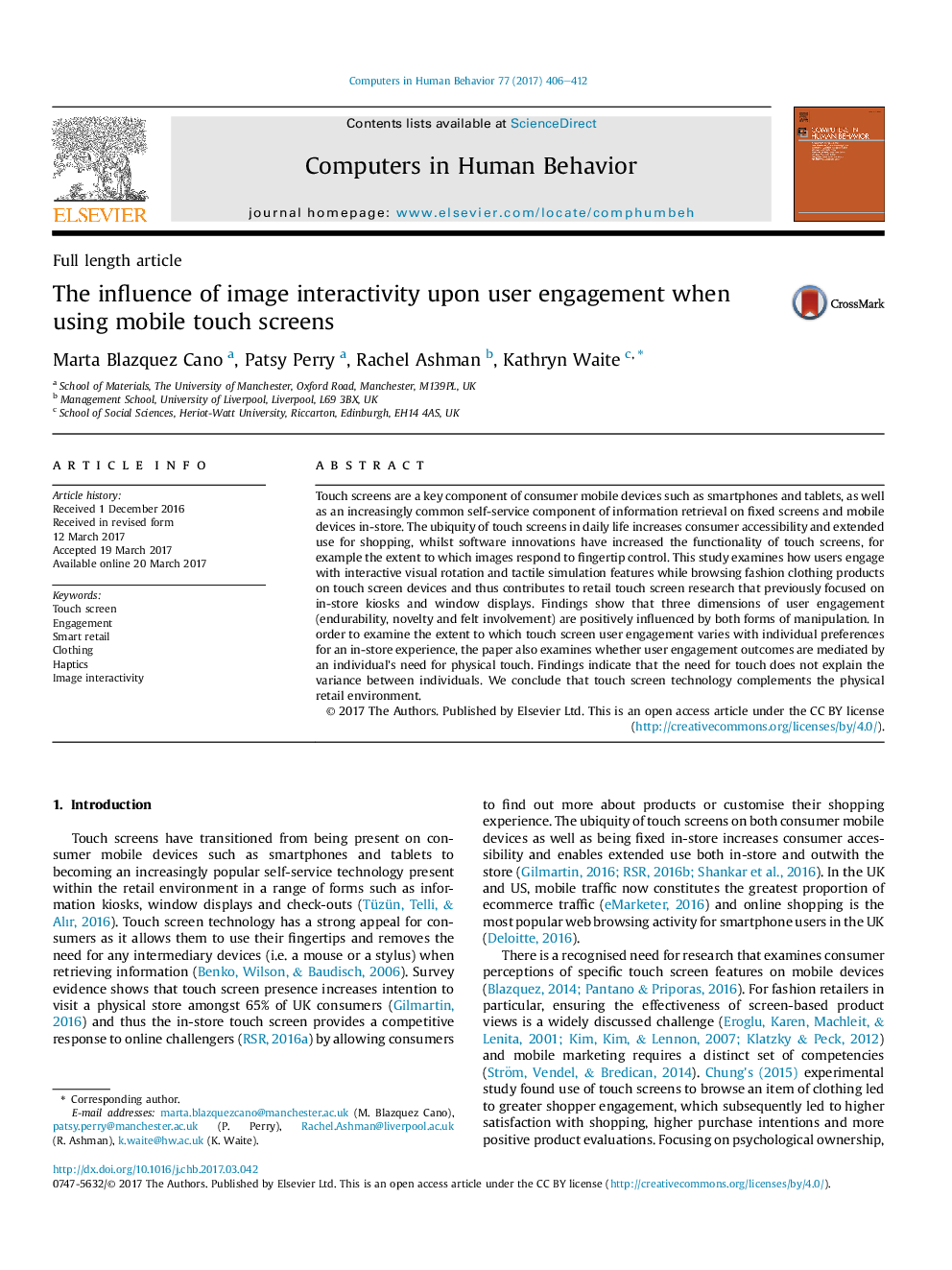| Article ID | Journal | Published Year | Pages | File Type |
|---|---|---|---|---|
| 4937061 | Computers in Human Behavior | 2017 | 7 Pages |
â¢The presence of interactive image technology increases user engagement.â¢Image rotation and fabric scrunch features equally influence user engagement.â¢Need for touch is not a mediating variable in a fashion apparel browsing task.
Touch screens are a key component of consumer mobile devices such as smartphones and tablets, as well as an increasingly common self-service component of information retrieval on fixed screens and mobile devices in-store. The ubiquity of touch screens in daily life increases consumer accessibility and extended use for shopping, whilst software innovations have increased the functionality of touch screens, for example the extent to which images respond to fingertip control. This study examines how users engage with interactive visual rotation and tactile simulation features while browsing fashion clothing products on touch screen devices and thus contributes to retail touch screen research that previously focused on in-store kiosks and window displays. Findings show that three dimensions of user engagement (endurability, novelty and felt involvement) are positively influenced by both forms of manipulation. In order to examine the extent to which touch screen user engagement varies with individual preferences for an in-store experience, the paper also examines whether user engagement outcomes are mediated by an individual's need for physical touch. Findings indicate that the need for touch does not explain the variance between individuals. We conclude that touch screen technology complements the physical retail environment.
